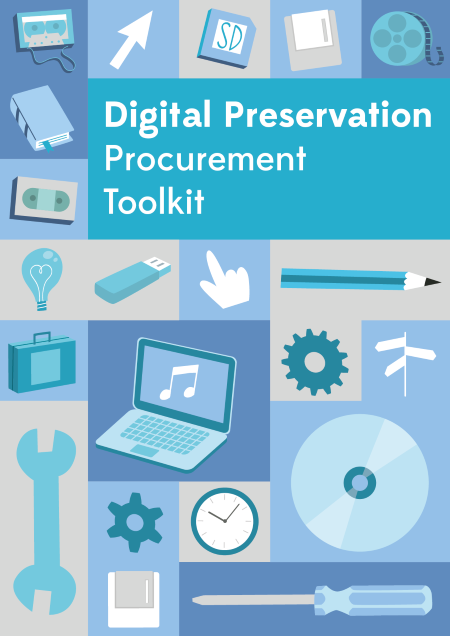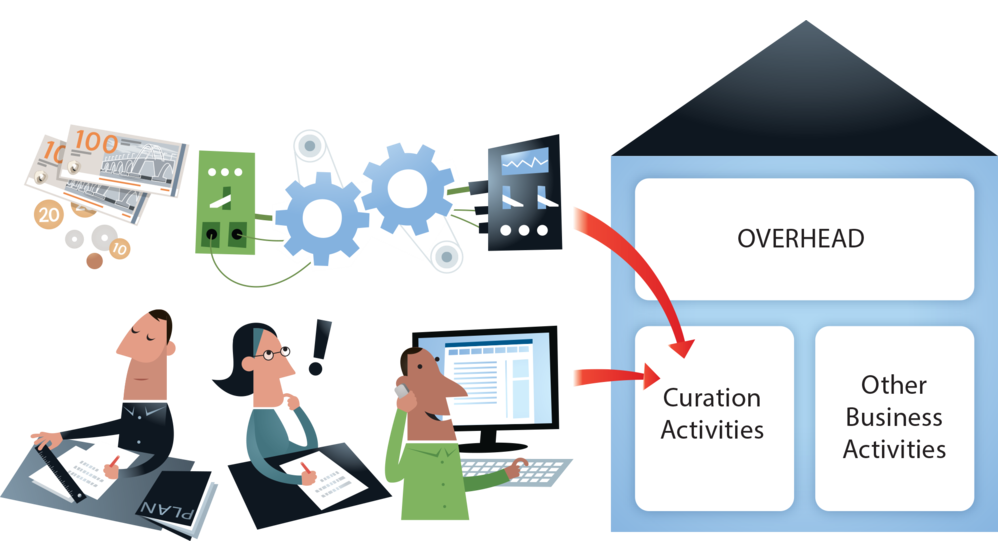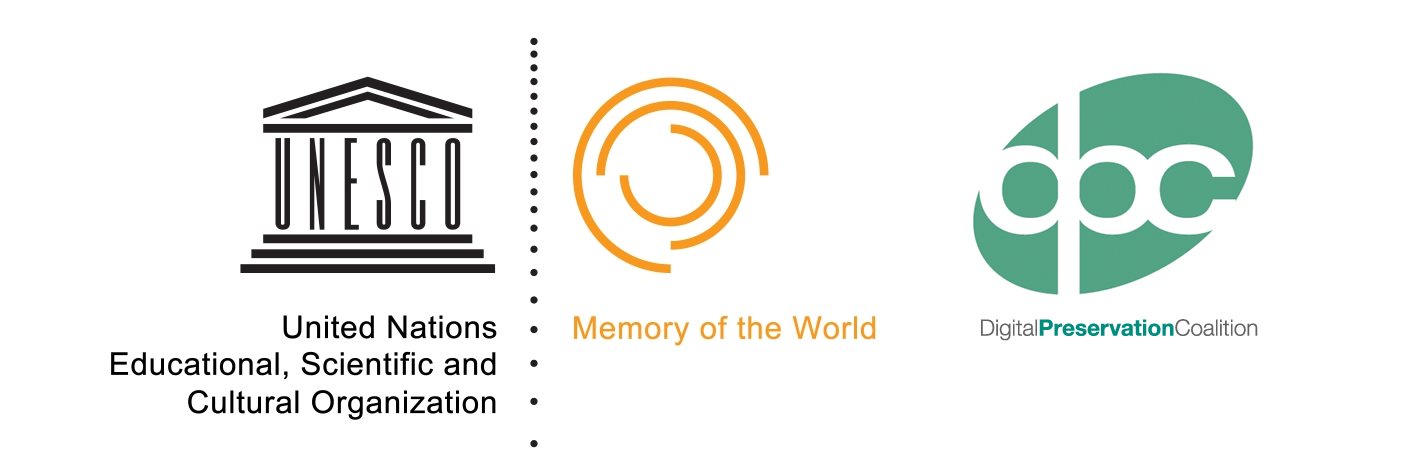Digital Preservation Procurement Toolkit v2.0

Use this to help deliver a successful procurement of third party digital preservation services or infrastructure
This Toolkit does not aim to provide a guide to procurement itself, but instead to provide advice on how to get the best result possible out of a procurement process with a minimum of pain. It has been designed primarily for DPC Members who are procuring services, but it will also provide benefits to DPC Supporters by improving communication, clarity and efficiency throughout a procurement. Consultation with both DPC Members and DPC Supporters suggests that both parties have much to gain if the taxing process of procurement can be improved.
Version 2 of this Toolkit, launched May 2022, includes revisions and a new resource on Core requirements for a digital preservation system.
Please note that the Lessons Learned section is available to DPC members only, who should login to use it.
IntroductionA foreword and introduction to this Toolkit, with thoughts on future development |
|
Lessons learned in digital preservation procurementDPC Members only A detailed guide providing lessons learned on procurement based on DPC Members experiences. |
|
Common requirements structure for preservation system procurementA structure for describing preservation system requirements in a standardized manner. |
|
Core requirements for a digital preservation system10 high-level functional requirements for a digital preservation system |
|
Digital preservation requirements for procuring IT systemsRequirements for procuring an IT system that may contain records for rentention beyond the life of the system |
|
Advice from DPC SupportersRecordings and write-ups of our events with DPC Supporter organizations, including a top ten list of tips for success. |
|
Further resourcesA list of additional guidance materials relating to procurement. |
| Suggested citation of current version |
Digital Preservation Coalition (2022). Digital Preservation Procurement Toolkit. Version 2. [http://doi.org/10.7207/procurementtoolkit22-02] |
| Last updated |
May 2022 |
| Date of next planned review |
2025 |
The Core requirements for a digital preservation system were developed in conjunction with the Nuclear Decommissioning Authority.
The Digital Preservation Policy Toolkit was collated by Paul Wheatley, and was the built on the wealth of knowledge offered by DPC Members and Supporters - many thanks to them for their generous contributions to this toolkit.
Thanks to Tom Woolley for the illustrations.
Please note that the "Lessons Learned in digipres procurement section is made available for DPC Members only and is not CC-BY-NC.
Digital Preservation Policy Toolkit

This Toolkit provides information to assist in the construction of a digital preservation policy. It will help guide you from initial research and preparation phases, to drafting your policy, gathering feedback and, finally, polishing and communicating the finished policy.
This Toolkit is for anyone who would like to create a policy focused on digital preservation. It is targeted at all those working with digital content who have chosen to, or are required to, create a policy to support digital preservation activities.
There is no one-size-fits-all formula for writing a digital preservation policy. How you write your policy will depend on your own context and will need to take account of the intended audience and purpose, the drivers within your organization and its digital preservation maturity. This Toolkit seeks to guide you through a process which will help you to understand this organizational context, and then communicate a policy that is fully relevant to it.
This Toolkit builds on the work of numerous members of the digital preservation community and brings together many good examples of digital preservation policy. Our thanks go to all those who make their preservation policies publicly available - we can all learn from seeing how others have tackled this challenge.
IntroductionAn overview and introduction to preservation policies and this toolkit. |
|
| |
What makes a good digital preservation policy?Experience pooled from within the DPC on what makes a good (and bad) policy. |
Step-by-step-guide to building a preservation policyA step by step guide to the researching, drafting, establishing and sustaining a preservation policy. |
|
| |
Template for building a preservation policyA detailed guide for building a preservation policy, with numerous references to existing policies. |
Reviewing your policyInformation to guide future work on keeping your policy current and relevant. |
|
University of Bristol Case StudyAn exemplar policy that was developed alongside this Toolkit, and a details of how it was created. |
|
Further resourcesA list of additional guidance materials relating to preservation policies. |
|
Suggested citation of current version |
Digital Preservation Coalition (2023). Digital Preservation Policy Toolkit. Version 2 [http://doi.org/10.7207/policytoolkit23-02] |
|
Last updated |
March 2023 |
|
Date of next planned review |
2026 |
This is version 2 of the Digital Preservation Policy Toolkit (released March 2023). The initial creation of this toolkit was a collaborative exercise involving a booksprint and many enthusiastic individuals. Thank you to all of those who were involved! Read more and find out about how the toolkit was created here.
Do contact us with comments and feedback to help us improve this toolkit.
Digital Preservation Business Case Toolkit v2.0
![]()
This Toolkit provides information to assist in the construction of a business case for resourcing digital preservation activity.
The first version of the Business Case Toolkit was created in a 3 day workshop in 2013, that followed the format of a Book Sprint and was part of the SPRUCE Project. A second book sprint in 2022 created a brand new version of the Toolkit released in 2023.
Introduction to the Business Case ToolkitAn overview and introduction to business cases and this toolkit. |
|
What makes a good digital preservation business case?Experience pooled from within the DPC on what makes a good policy. |
|
Understand your digital preservation readinessUnderstanding the context and preparations that are needed before producing a business case. |
|
Step-by-step-guide to building a business caseAn outline of the main steps to follow in constructing your business case including research, drafting, validation and delivery. |
|
Template for building a business caseAn exploration of the detail that makes up an evidenced and convincing business case. |
|
Example benefits and risks for typical digital preservation business casesMotivations for 4 common business case targets. |
|
Business case hints and tipsA summary of hints and tips on writing business cases and selling your proposal to your organization. |
|
Further resources on business casesA list of additional guidance materials relating to business cases. |
| Suggested citation of current version | Digital Preservation Coalition (2023). Digital Preservation Business Case Toolkit. Version 2 [http://doi.org/10.7207/businesscasetoolkit23-02] |
| Last updated | 2023 |
| Date of next planned review | 2026 |
Thanks go out to the DPC Members, Supporters and Staff who contributed to version 2.0 of the Toolkit: Lydia Bennett, Iron Mountain - Neil Grindley - Jisc, Edith Halvarsson - Bodleian Libraries, Sharon McMeekin - Digital Preservation Coalition, Sarah Middleton - Digital Preservation Coalition, Michael Popham - Digital Preservation Coalition, Angela Puggioni - Digital Preservation Coalition, Sean Rippington - University of St Andrews Library, Paul Wheatley - Digital Preservation Coalition
Thanks to Tom Woolley for the illustrations.
Level up with DPC RAM

The DPC’s Rapid Assessment Model is a helpful tool for assessing an organization’s maturity with digital preservation. It allows you to consider both where you are currently and where you would like to be, and highlight gaps in your current digital preservation capacity.
This resource is designed to help you work out how to address those gaps and move up the levels of RAM. For each of the 11 sections of RAM there are helpful tips, links to useful resources and case studies from others who have already tackled some of these challenges.
If there are resources that have been helpful for you that aren’t included here, do contact us and let us know. Similarly, if you would like to share your own case study about how you have tackled a specific area covered by DPC RAM we would love to hear from you. We have a number of topics we are particularly keen to hear about and are actively looking for community members to blog for us.
Select a section of DPC RAM to find tips, resources and case studies to help you move forward (DPC Members please login to the website to access this resource):
RAM Section |
Tips |
Resources |
Case Studies |
|
Governance, organizational structure, staffing and resourcing of digital preservation activities. |
 |
 |
 |
|
Policies, strategies, and procedures which govern the operation and management of the digital archive. |
 |
 |
 |
|
Management of legal rights and responsibilities, compliance with relevant regulation and adherence to ethical codes related to acquiring, preserving and providing access to digital content. |
 |
 |
 |
|
Information Technology capabilities for supporting digital preservation activities. |
 |
 |
 |
|
Processes for the assessment of current digital preservation capabilities, the definition of goals and the monitoring of progress. |
 |
 |
 |
|
Engagement with and contribution to the wider digital preservation community. |
 |
 |
 |
|
G - Acquisition, transfer and ingest Processes to acquire or transfer content and ingest it into a digital archive. |
 |
 |
 |
|
Processes to ensure the storage and integrity of digital content to be preserved. |
 |
 |
 |
|
Processes to preserve the meaning of the digital content and ensure its continued accessibility and usability over time. |
 |
 |
 |
|
Processes to create and maintain sufficient metadata to support preservation, discovery and use of preserved digital content. |
 |
 |
 |
|
Processes to enable discovery of digital content and provide access for users. |
 |
 |
 |
This companion resource to DPC RAM was inspired by two ‘RAM Jam’ events hosted in 2021 and 2022 during which DPC Members shared experiences, knowledge and tips on how they had moved forward with different sections of RAM. Many of the tips and links shared, as well as the quotes included in this resource originated from these events.
How often should DPC RAM be used?
|
DPC RAM has continuous improvement at its core! Though it can be used for a one-off exercise it is recommended that it is applied on a more regular basis to highlight progress or demonstrate where further resource is required. It has been designed to provide a rapid assessment of current capabilities so it should not be too onerous a task to apply it on a regular schedule. DPC Members will be encouraged to complete DPC RAM on an annual basis. |
|
How should DPC RAM be used?
Applying DPC RAM should be fairly straightforward but there are a few important things to note:
- The bulleted lists provided as examples within each of the sections are provided as illustrative examples only - you don’t have to tick them all off before you have attained a level. They may not all apply to the context in which you work, or you may have other things that you do that help you reach that level.
- Make an honest and realistic assessment which level best fits your current capability. If you partially meet a level but would like to do some more work in order to sit comfortably within it, the score (for now) should be the level below. You can always plan to hit the higher level next time around!
- It is up to you to define the scope of your assessment - you may decide to carry out one DPC RAM assessment for all digital content of long term value held by your organization or you may find it more useful to focus on one stream of content or one department within a larger institution. Use it in whatever way is most useful to you and your institution!
How long will it take to use DPC RAM?
|
The model is designed to be relatively quick and easy to use for any organization charged with preserving digital information for the long term. Some institutions have applied this model in less than 1 hour. For others it may take longer, particularly if wider consultation with a range of colleagues is required or if multiple streams of digital content are being assessed. Note that though establishing where your organization is using DPC RAM may be a relatively quick process, it may take longer to consider where you would like to be and to plan actions for moving forward. |
|
Who can use DPC RAM?
|
DPC RAM can be used by any organization with a need to preserve digital information for the long term. It should be possible to apply it regardless of the sector in which you work or the type of information that is being preserved. The maturity levels are based on existing good practice and try to be agnostic to particular preservation strategies or approaches.
DPC RAM for DPC MembersWhilst the model is freely available for anyone to use, DPC Members will have the additional benefit of the ability to benchmark and compare their results with that of other members. The model when applied across the DPC membership will also help facilitate DPC Member Support activities and work planning, enabling the capture of basic information on member needs and highlighting areas where additional support is needed. |
|
What to do after DPC RAM
| After completing your DPC RAM assessment you may want to follow up with some further activities:
|
|
Executive Guide on Digital Preservation
The Executive Guide on Digital Preservation provides practitioners with a combination of generic and specific messages and motivators designed to communicate with senior executives, legislators and budget holders, as well as decision and policy makers with a view to embedding the value of digital preservation at the core of every organization.

Illustration by Jørgen Stamp digitalbevaring.dk CC BY 2.5 Denmark
Get Started with the Executive Guide on Digital Preservation
Find out how to use the Executive Guide on Digital Preservation by reading the brief introduction.
-
What is your Organisation type?
Choose from generic statements and tailor them to your own organisation, or select statements specific to a range of organisation types.
-
What are your Organisation's Motivators?
Motivators are topics or issues that are particularly relevant or important to your organization.
-
What is Digital Preservation?
"Digital Preservation is a series of managed activities necessary to ensure continued access to digital materials for as long as necessary."
-
What are the Risks of not preserving digital materials?
"Failing to preserve digital materials renders them unusable"
-
What Opportunities do preserved digital materials create?
"Preserving digital materials creates opportunities that align with the key motivators in your organization"
-
What does Digital Preservation need?
"Digital Preservation needs an enabling policy and regulatory environment including organisations and technical infrastructure which is appropriately resourced."
-
Facts and Figures
Add evidence which supports the case for Digital Preservation to your templates
-
Templates
Download editable PowerPoint and Word templates and customise them with statements from the Executive Guide.
Subcategories
Template for building a Business Case
This section provides guidance on the content that will be useful to include in your business case, but it will likely need to be adapted to the structure used in your organization’s template.










































































































































